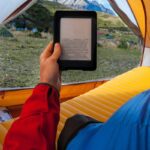10 Tips for Sleeping Comfortably in a Tent
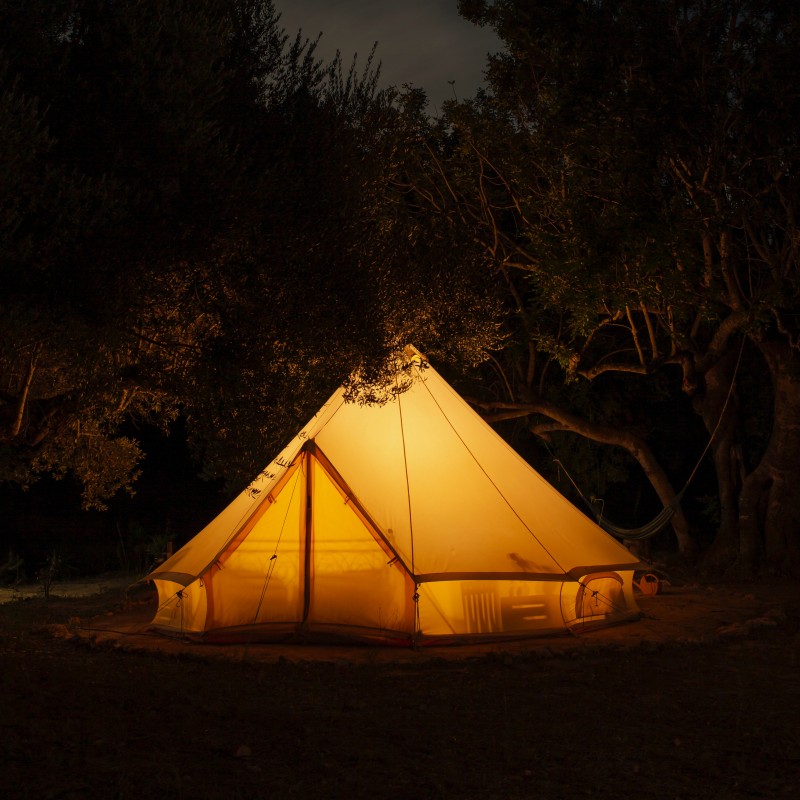
A good night’s sleep is essential if you are planning a camping trip and intend to spend the night in a tent. Sleeping in a tent, on the other hand, is not the same as sleeping in a comfy bed.
Unfamiliar surroundings, hard ground, and temperature changes can make it difficult to sleep well. Fortunately, there are methods for ensuring a restful night’s sleep in a tent.
This article will provide you with ten practical tips for sleeping comfortably in your tent. Whether you’re a seasoned camper or a novice outdoorsman, these tips will help you get a good night’s sleep so you can fully enjoy your camping trip.
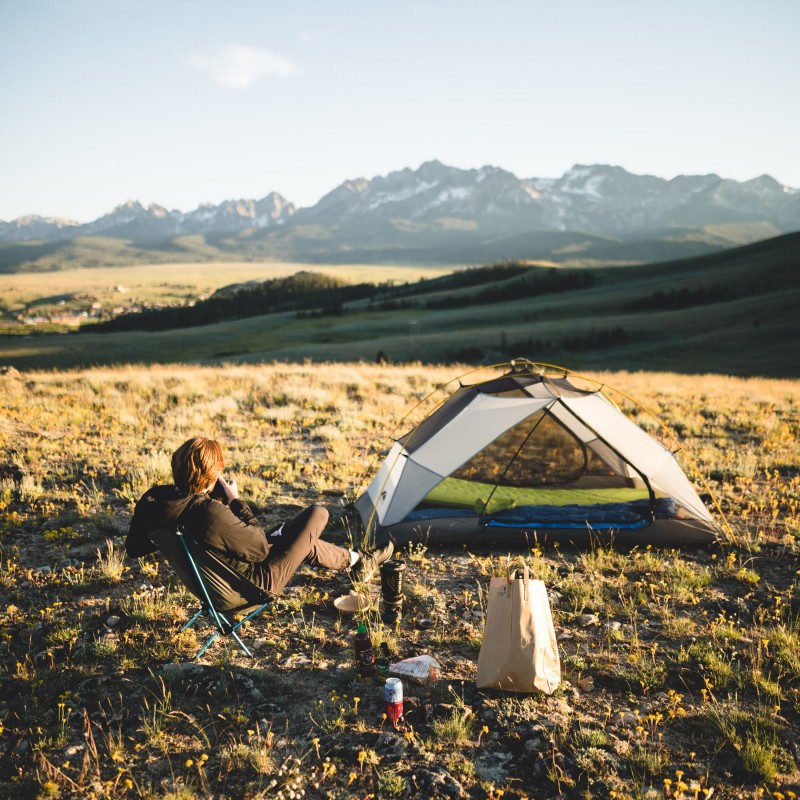
A good night’s sleep is essential for enjoying the outdoors and making the most of your adventure when camping. It is important to remember that camping is physically demanding and without proper rest you may not have the energy to hike, fish or participate in other activities you have planned.
A good night’s sleep is also essential for your physical and mental well-being. When you get enough sleep, your body has time to recover and regenerate, which helps prevent injury and illness.
In addition, sleep plays a vital role in regulating your mood, reducing stress and improving cognitive function, all of which are key to enjoying your camping experience.
Despite these obstacles, it is possible to overcome them with some preparation and strategic planning and enjoy a comfortable and restful night’s sleep in a tent.
You can ensure a good night’s sleep and enjoy your camping experience to the fullest by following specific tips and strategies, such as selecting the right tent, sleeping bag, and sleeping pad, dressing appropriately for bedtime and properly setting up the tent.
Ten tips for sleeping comfortably in a tent provide useful strategies for dealing with the unique challenges of sleeping outside.
These suggestions cover everything from selecting the proper camping equipment to creating a sleep-friendly environment and establishing bedtime routines.
The first tip focuses on selecting the appropriate camping equipment, such as a tent, sleeping bag, and sleeping mat, to ensure comfort and warmth.
The second tip emphasizes the importance of selecting the proper sleeping position, considering factors such as comfort and ground slope.
The third suggestion is to create a comfortable sleeping environment, such as by reducing noise and adjusting the temperature.
The fourth tip is to dress appropriately for bedtime.
The fifth is to establish a bedtime routine to help campers relax and unwind.
The sixth suggestion is to avoid caffeine, alcohol, and roughage before bedtime because they can interfere with sleep.
The seventh suggestion is to stay hydrated during the day.
The eighth is to use earplugs or a white noise machine to reduce noise.
To increase comfort, the ninth recommendation suggests that campers bring comfortable bedding, such as pillows and blankets.
Finally, the tenth tip advises keeping a positive attitude and enjoying the experience of sleeping outside.
Campers can improve their chances of getting a good night’s sleep and thoroughly enjoying their camping experience by following these tips.
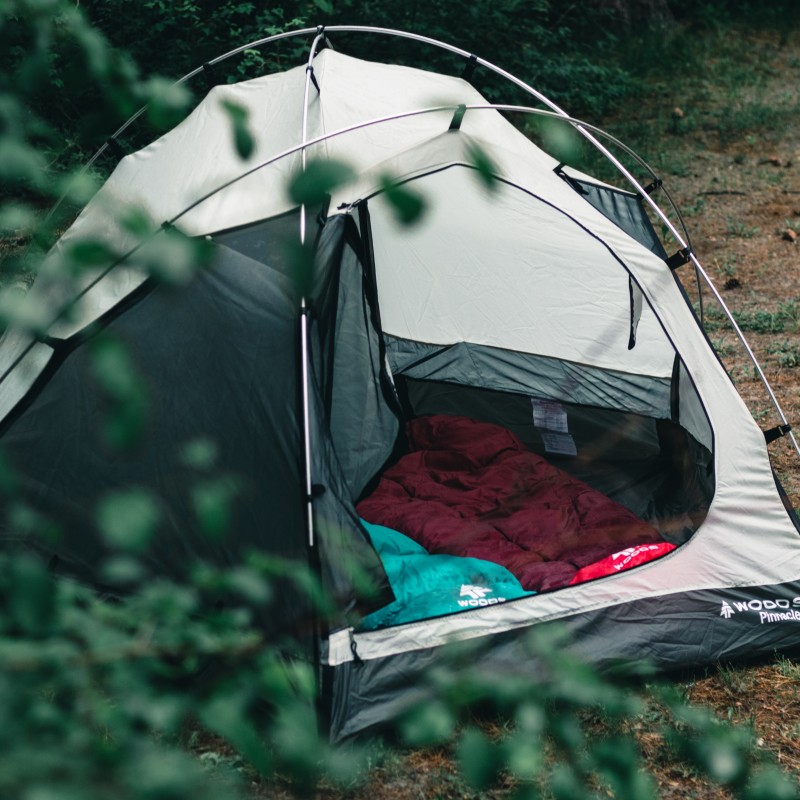
Choose the Right Tent
A good camping vacation depends on picking the proper tent. Size and form, material and design, and ventilation are the three main things to think about.
The amount of people and equipment that will be sleeping within the tent should dictate its size and design.
Based on the anticipated weather and required durability, the tent’s material and design should be chosen.
Last but not least, a tent with good ventilation will keep you dry and comfy all night long. You may select a tent that will satisfy your camping demands and offer a cozy place to relax by taking these elements into account.
Size and shape of the tent
When camping, the size, and shape of your tent are critical considerations. The tent’s size should be determined by the number of people who will sleep inside it as well as any equipment that will need to be stored inside.
It is critical to ensure that there is enough space to move around without feeling confined or claustrophobic. The tent’s shape will also have an impact on comfort and sleeping conditions.
Dome tents are popular and efficient because they provide ample headroom and a sturdy structure that can withstand inclement weather. Cabin-style tents, on the other hand, have a more vertical design with straight walls that provide more headroom for taller campers.
It is also necessary to consider the type and location of the camping trip when selecting a tent.
A smaller, more compact tent might be better for backpacking, whereas a larger tent might be better for family camping.
A waterproof tent with good ventilation is ideal for camping in wet climates, whereas a lightweight and easy-to-pitch tent may be more appropriate for a quick weekend getaway.
Finally, choosing the right size and shape of tent is critical for a restful night’s sleep while camping. When making your decision, consider the number of people, equipment, weather conditions, and type of camping trip.
Material and design of the tent
When selecting a camping tent, the material and design are important factors to consider. The type of material used can determine the durability, waterproofness and weight of the tent.
Canvas tents, for example, are durable and weatherproof but heavy, whereas polyester and nylon tents are lightweight and easy to set up but may not be as durable.
The tent’s design is also important because it affects the tent’s overall comfort and functionality. A well-designed tent should have enough headroom, easy access points, and adequate ventilation to avoid condensation buildup.
Furthermore, a porch tent can provide additional storage space for gear and protect sleeping areas from inclement weather.
Tents come in a variety of shapes, such as domes, huts, and tunnels. Each shape has advantages; for example, dome tents provide good stability in windy conditions, whereas cabin tents provide more headroom and space. Tunnel tents, on the other hand, are lightweight and simple to set up, making them ideal for backpacking.
Finally, the material and design of a tent are important factors in determining its overall comfort and functionality. It is critical to select a tent that is made of long-lasting materials, is well-ventilated, and is designed to meet the specific needs of a camping trip.
Ventilation
Ventilation is an important consideration when camping because it helps regulate the temperature inside the tent and prevents condensation buildup. Good ventilation allows for the circulation of fresh air, which reduces the risk of stale air and unpleasant odors.
This is especially important during the summer when the inside of a tent can become stuffy and uncomfortable.
Campers should choose a tent with mesh windows or vents that allow air to flow freely to ensure proper ventilation. Additionally, when sleeping, avoid closing all of the tent flaps, as this can trap warm air and increase condensation.
Campers can instead leave a flap or vent open to allow fresh air in while maintaining privacy and protection from the elements. A well-ventilated tent can help you sleep more comfortably and restfully while camping.
Select the Right Sleeping Bag
To be cozy and warm when camping, the ideal sleeping bag is crucial. Here are the top three things to take into account while choosing a sleeping bag:
Initially, the sleeping bag’s temperature rating needs to be compatible with the predicted weather.
Second, a sleeping bag’s size and form should be chosen depending on preferences and requirements for comfort.
Lastly, the sleeping bag’s insulation and material should be selected to match both personal tastes and the predicted weather.
You may choose a sleeping bag that will offer a cozy and warm sleeping environment on your upcoming camping trip by keeping these considerations in mind.
Temperature rating of the sleeping bag
A sleeping bag’s temperature rating is an important consideration for a restful night’s sleep while camping. The temperature rating of a sleeping bag indicates the lowest temperature at which it will keep the user warm.
It is critical to select a sleeping bag with the appropriate temperature rating for the anticipated weather conditions.
A sleeping bag with a temperature rating of 20 degrees Fahrenheit, for example, is appropriate for cold-weather camping, whereas a bag with a temperature rating of 40 degrees Fahrenheit is better suited for milder weather.
Choosing a sleeping bag with the appropriate temperature rating can ensure a restful and comfortable night’s sleep while camping.
Shape and size of the sleeping bag
When choosing a sleeping bag for camping, consider the shape and size of the bag. Sleeping bags are available in a variety of shapes, such as rectangular, mummy, and semi-rectangular.
Mummy bags provide a snug fit around the body for maximum warmth but less movement, whereas rectangular bags provide more space and are ideal for those who prefer more space.
It is critical to select a sleeping bag that fits comfortably, as a bag that is too tight or too loose can cause discomfort and disrupt sleep quality.
Choosing the right shape and size of a sleeping bag is critical for a restful night’s sleep while camping.
Material and insulation of the sleeping bag
The material and insulation of a sleeping bag are essential factors to consider when selecting one for camping.
Synthetic insulation is ideal for wet or humid conditions, while down insulation is lightweight and provides excellent warmth.
Sleeping bag materials such as polyester and nylon are durable and water resistant, making them perfect for camping. It’s crucial to choose a sleeping bag with the appropriate insulation and material for the expected weather conditions.
This will ensure a comfortable and restful night’s sleep while camping. Additionally, proper care and maintenance of the sleeping bag can extend its lifespan and ensure it stays in good condition for future camping trips.
Invest in a Good Sleeping Pad
Investing in a good sleeping pad is crucial for a comfortable night’s sleep while camping. A sleeping pad provides insulation from the cold ground and cushioning for pressure points.
There are various types of sleeping pads available, including foam, air, and self-inflating options.
The thickness and insulation of the sleeping pad should be selected based on the expected weather conditions and personal comfort preferences.
By choosing the right sleeping pad, you can ensure a more comfortable and restful sleep while camping, helping you to fully enjoy your outdoor adventure.
Importance of a sleeping pad
A sleeping pad is an essential piece of camping equipment that contributes to a restful night’s sleep. It isolates and cushions the body from the hard ground, aids in body temperature regulation, and reduces pressure points.
Campers who do not use a sleeping pad may experience discomfort, coldness, and poor sleep quality. Sleeping pads come in a variety of styles, including self-inflating pads, foam pads, and air pads.
Choosing the right sleeping pad is critical for a restful night’s sleep while camping. When choosing a sleeping pad for camping, factors such as weight, insulation, and packability must be considered.
Types of sleeping pads
Camping sleeping pads come in a variety of styles, including self-inflating, foam, and air pads. The foam core of self-inflating pads inflates automatically when the valve is opened and can be adjusted for firmness.
Foam pads are lightweight, durable, and offer excellent insulation, making them ideal for cold-weather camping. Air pads are portable, lightweight, and comfortable, but they may require a pump or manual inflation.
Personal preference and camping conditions must be considered when selecting a sleeping pad. When choosing a sleeping pad for camping, it is critical to consider factors such as weight, insulation, comfort, and packability.
Thickness and insulation of the sleeping pad
When choosing a sleeping pad for camping, thickness and insulation are critical factors to consider.
Thinner sleeping pads are more compact and lightweight, while thicker ones provide more cushioning and comfort. In colder weather, the insulation in a sleeping pad helps to retain body heat, providing warmth and comfort.
When deciding on the thickness and insulation of a sleeping pad, keep in mind the expected camping conditions. A thicker, more insulated pad is ideal for cold-weather camping, whereas a thinner pad may suffice in warmer conditions.
Choosing the right thickness and insulation for your sleeping pad can help you have a restful night’s sleep while camping.
Dress for Bedtime
Dressing appropriately for bedtime is crucial for a good night’s sleep while camping. Layering clothing can provide warmth and allow for adjusting to changing temperatures throughout the night.
Choosing appropriate clothing, such as moisture-wicking materials and thermal underwear, can also help to keep you warm and dry.
It’s important to stay dry, so avoid cotton clothing that can retain moisture. Instead, opt for quick-drying synthetic or wool materials.
By dressing appropriately for bedtime, you can stay warm and comfortable throughout the night, ensuring a restful and enjoyable camping experience.
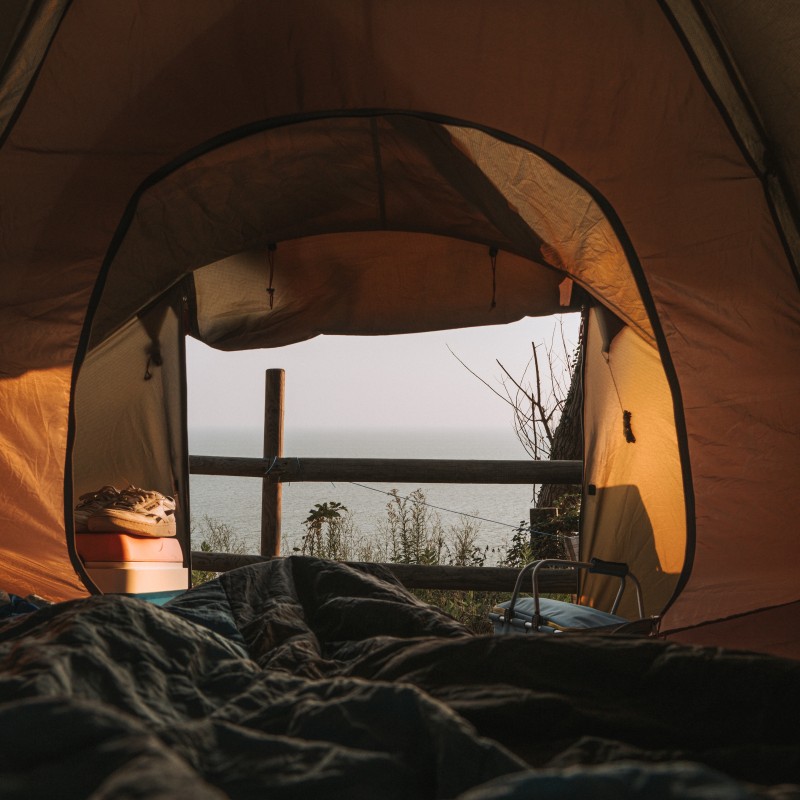
Layering for warmth
When camping in cold weather, layering for warmth is a crucial consideration. This technique involves wearing multiple layers of clothing to create insulation and trap heat close to the body.
The layering system typically includes a base layer, mid-layer, and outer layer. The base layer is made of moisture-wicking material to keep sweat away from the body, while the mid-layer provides insulation, such as fleece or down.
The outer layer protects against wind and moisture. By layering appropriately, campers can regulate their body temperature, stay warm and comfortable, and avoid the dangers of hypothermia while camping in cold weather.
Choosing appropriate clothing
Choosing the proper clothing is essential for a comfortable and safe camping experience. Clothing should be chosen based on the weather and activity level.
Warm weather necessitates lightweight, moisture-wicking clothing, whereas cold weather necessitates insulated, waterproof attire. Clothing should be both comfortable and functional.
Wear extra layers of clothing if the weather changes or if an accident occurs. Campers can dress appropriately for any weather conditions that may arise during a camping trip to stay comfortable, safe, and well-prepared.
Keeping dry
Staying dry is critical to having a pleasant camping experience. Wet clothing and equipment can quickly cause discomfort and even hypothermia in cold weather.
To stay dry, campers should buy waterproof equipment such as rain jackets and rain trousers. They should also choose a relatively dry campsite and avoid pitching tents in low-lying areas or near streams or rivers.
In addition, campers should bring extra towels and clothing in case they get wet. Campers can avoid discomfort and stay safe during their camping trip by staying dry.
Keep Your Tent Organized
An ordered tent is essential to a relaxing and successful camping trip. You may make more room and lessen clutter by keeping stuff outside the sleeping area.
It’s crucial to keep everything organized and in its proper location.
The setting may be made more soothing and the quality of sleep can be improved by keeping the sleeping place tidy and uncluttered.
Your camping vacation will be more pleasurable overall if you take the time to prepare your tent so that it is a more cozy and practical living area.
Importance of organization
Keeping dry is essential for a comfortable and safe camping experience. Wet clothes and equipment can quickly cause discomfort, especially in colder weather, and increase the risk of hypothermia.
To avoid this, carry waterproof gear such as rain jackets and pants and avoid pitching the tent in flood-prone areas or near water sources.
Packing extra towels and clothing is also a good idea in case of unexpected rain or snow. You can stay dry and have a more comfortable and secure camping trip if you take these precautions.
Keeping gear outside
Often overlooked but crucial for a comfortable camping trip, storing gear outside the tent is a wise move.
Keeping gear inside the tent can limit movement, create clutter and increase condensation, leading to an uncomfortable sleeping experience.
By storing gear outside, you can free up space and reduce the risk of moisture, dirt, and bugs entering the tent. It’s essential to store gear in waterproof bags and keep them away from water sources to prevent dampness.
It’s a simple yet effective way to enhance your camping experience and ensure a comfortable night’s sleep.
Keeping sleeping area clean and clutter-free
A clean and clutter-free sleeping area is essential for a good night’s sleep while camping. It is critical to keep the sleeping area free of dirt, debris, and food crumbs, as these can attract insects and create an uncomfortable environment.
Clutter can limit movement and make it difficult to find items when you need them. To keep the sleeping area tidy, keep personal items like clothes, books, and electronics in designated storage pockets or compartments.
Cleaning the sleeping area on a regular basis and packing up items immediately after use can help maintain a clutter-free environment and ensure a comfortable sleeping experience.
Set Up Your Tent Correctly
Setting up your tent correctly is essential to ensure a comfortable and safe camping experience. First, choose a level ground to pitch your tent.
Proper stake and guy line placement can also help to secure your tent and prevent it from collapsing in windy conditions.
When pitching the tent, consider ventilation to prevent condensation buildup and maintain a comfortable interior temperature.
By taking the time to set up your tent correctly, you can ensure a stable and comfortable living space while camping, helping to make your outdoor adventure a success.
Importance of a level ground
When it comes to setting up a tent for a good night’s sleep, having a level ground is crucial. A slight slope or uneven surface can make it uncomfortable and difficult to sleep.
Not only can it cause discomfort, but it can also lead to rolling around or sliding during the night.
In addition, uneven ground can cause damage to the tent floor or poles. Choosing a flat and even area for setting up the tent is essential for a comfortable and restful night’s sleep.
It is always best to check the ground for any sharp rocks, sticks or other objects that could puncture or damage the tent floor.
Proper stake and guy line placement
To ensure a stable and secure tent setup, proper stake and guy line placement is critical.
Tent stakes should be driven into the ground at a 45-degree angle, pointing away from the tent, and should be placed at a distance from the tent corners equal to the length of the stake.
Guy lines should be secured to stakes or natural anchors such as trees or rocks and attached to the tent’s anchor points.
Properly placed stakes and guy lines help to evenly distribute the tent’s weight and provide stability in windy conditions.
It also keeps the tent from flapping or collapsing during the night, allowing you to sleep comfortably and peacefully.
Pitching the tent with ventilation in mind
It is critical to pitch the tent with ventilation in mind if you want to sleep comfortably in the great outdoors.
Without adequate ventilation, the interior of the tent can become stuffy, humid, and hot, making it difficult to breathe and sleep comfortably.
Consider the wind direction when erecting the tent and position the door and windows accordingly. Also, leave enough space between the tent and any obstructions, such as trees or bushes, to allow for proper airflow.
Ventilation not only helps with temperature control, but it also reduces condensation on the tent’s interior, keeping you and your gear dry all night.
Block Out Noise and Light
Blocking out noise and light is crucial for a good night’s sleep while camping. Distractions can disrupt sleep and reduce the quality of rest.
Earplugs and eye masks can help to block out noise and light, creating a more peaceful sleeping environment.
Choosing a quiet campsite can also help to minimize noise disruptions.
By taking steps to block out distractions, you can improve sleep quality and ensure a more restful and enjoyable camping experience.
Importance of blocking out distractions
There are a variety of sounds and sights that can be distracting during the night when camping, ranging from wildlife and weather to fellow campers.
These distractions can make it difficult to fall or stay asleep, resulting in a less restful night’s sleep. It is critical to block out these distractions in order to get a good night’s sleep while camping.
This can be accomplished by using earplugs, noise-canceling headphones, or simply choosing a campsite away from other campers or potential sources of noise.
Earplugs and eye masks
Earplugs and eye masks can help you block out distractions and get a better night’s sleep while camping.
Earplugs can help reduce noise from nearby campsites or natural sounds like the wind or nearby animals. Eye masks are useful for blocking out light from the sun or other campfires, especially early in the morning when the sun rises early.
Campers can create a more comfortable and distraction-free sleeping environment by using earplugs and eye masks, promoting better quality sleep and overall relaxation during their camping trip.
Choosing a quiet campsite
A quiet campsite is essential for a good night’s sleep while camping. Avoid camping near busy roads, bodies of water, or popular gathering places. Because of constant traffic, people talking, or other activities, these areas tend to be noisier. Consider how close your tent is to the restrooms, as these are frequently busy areas. If you have a choice, look for campsites with more natural sound barriers, such as trees, bushes, or hills, which can absorb and reduce noise. A peaceful campsite can make or break a good night’s sleep in the great outdoors.
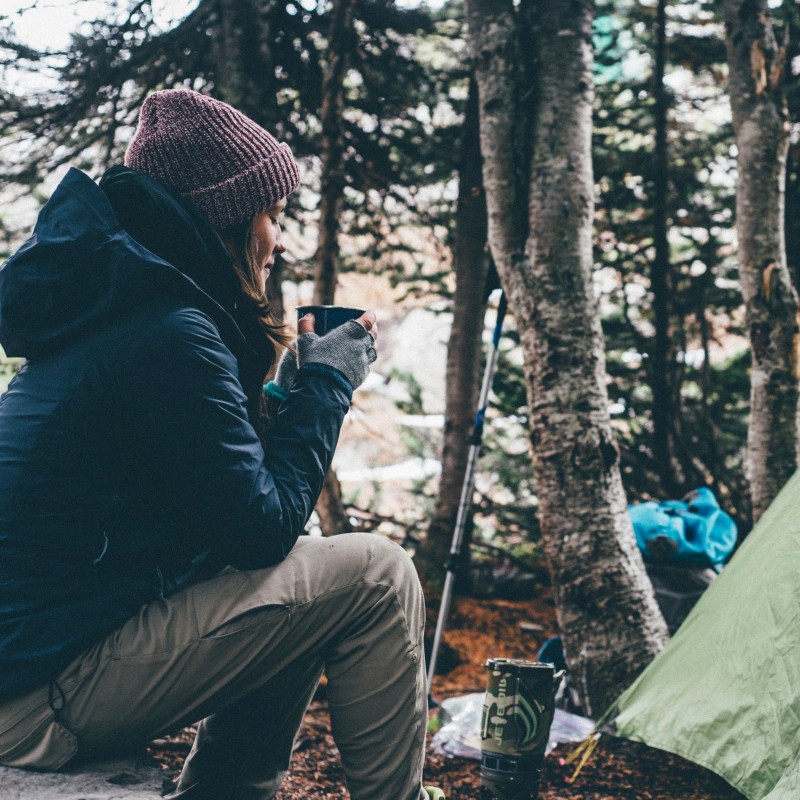
Manage Temperature Changes
Managing temperature changes is essential for a comfortable night’s sleep while camping. A hot water bottle can provide warmth on colder nights.
Adding or removing layers of clothing can help to regulate body temperature as needed.
Ventilation adjustments, such as opening or closing vents, can also help to manage temperature changes inside the tent.
By taking steps to manage temperature changes, you can stay comfortable and ensure a more restful sleep while camping, helping you to fully enjoy your outdoor adventure.
Using a hot water bottle
Using a hot water bottle to keep warm while camping is a simple yet effective method. It can keep you warm all night, especially if the temperature drops.
Fill the bottle halfway with hot water from a stove or campfire, closing the lid tightly to prevent leakage.
Then, to create a cozy and comfortable sleeping environment, place the bottle inside your sleeping bag or under your covers.
Wrapping the bottle in a cloth will also help prevent burns. During chilly camping nights, a hot water bottle can make a significant difference in keeping you warm and comfortable.
Adding or removing layers
Adding and removing layers is an important step in regulating your body temperature while camping. Because temperatures fluctuate throughout the day and night, it’s critical to layer appropriately to stay warm or cool.
If you get cold, add layers like a warm jacket, hat, and gloves. If you get too hot, take off layers and wear lighter clothing.
It’s also important to consider the fabric you’re wearing, as some fabrics regulate temperature better than others. With the proper layers, you can stay comfortable and enjoy your camping trip to the fullest.
Ventilation adjustments
Proper ventilation is essential for a pleasant camping experience. It not only helps to regulate the temperature inside the tent, but it also keeps condensation from forming, which can cause sleeping bags and clothing to become damp.
Campers should adjust the tent’s windows and vents to ensure adequate ventilation. Opening all of the vents and windows during the day can provide fresh air and keep the tent cool.
Campers should, however, close some of the vents and windows as the temperature drops at night to keep the tent warm.
Additionally, campers should ensure that the rainfly on their tent is not obstructing any of the vents, as this can reduce airflow inside the tent.
Practice Good Sleep Hygiene
For a peaceful and revitalizing night’s sleep when camping, it’s essential to practice proper sleep hygiene.
The body’s internal clock can be regulated by following a regular nighttime pattern that includes a regular bedtime and wake-up time.
A more restful night’s sleep can also be encouraged by avoiding gadgets before bed.
While it’s vital to stay hydrated, it’s recommended to avoid drinking anything just before bed to reduce the need for frequent toilet stops.
You may assure a more relaxing and pleasurable camping trip by following excellent sleep hygiene.
Sticking to a bedtime routine
Maintaining a bedtime routine can help you get a good night’s sleep while camping. Going to bed and getting up at the same time every day helps to regulate the body’s internal clock, which can improve sleep quality.
Campers can try to plan their activities accordingly, avoid caffeine and alcohol before bedtime, and wind down before bed with calming activities like reading or stretching to stick to a bedtime routine.
Furthermore, limiting your exposure to bright lights and screens before bed can help signal to your body that it’s time to sleep.
Campers can improve their chances of a restful and rejuvenating night’s sleep in the great outdoors by sticking to a bedtime routine.
Avoiding electronics before bed
Avoiding electronics before bedtime can help you get a good night’s sleep while camping.
Blue light emitted by electronic devices like smartphones, tablets, and laptops can interfere with the production of the sleep hormone melatonin, making it difficult to fall and stay asleep.
Instead of using electronics before bed, try reading a book, stretching, or taking in the scenery.
Furthermore, avoiding caffeine and alcohol hours before bedtime can improve sleep quality. Making these simple changes to your routine will increase your chances of getting a good night’s sleep while camping.
Staying hydrated
Staying hydrated is critical for a pleasant and healthy camping experience. Dehydration can result in fatigue, headaches, dizziness, and other unpleasant symptoms that can ruin your vacation.
Drink plenty of water throughout the day, especially if you’re doing physical activities like hiking. Make sure you bring enough water or have a plan in place to purify water from natural sources.
Electrolyte replacement drinks or packets can also help replenish nutrients that have been lost. It’s best to avoid sugary or caffeinated beverages, as they can dehydrate you even more.
To avoid dehydration, remember to listen to your body and drink water whenever you feel thirsty.
Conclusion
Camping can be a fun and exciting way to spend time outdoors, but getting a good night’s sleep is essential for fully enjoying the experience.
After a day of hiking, exploring, and being active, a comfortable and restful night’s sleep is essential for recharging and getting ready for the next day’s activities.
Fatigue and discomfort can make camping less enjoyable if you do not get enough sleep.
Following these tips for comfortable camping sleep can help you have a more restful and enjoyable experience, making your camping trip more memorable and rewarding.
So, why not try these tips on your next camping trip? You may be surprised at how much of a difference they make and how much more enjoyable your camping experience can be when you wake up refreshed and ready for a new day of adventure.
